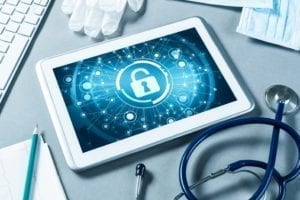In the past, medical devices lived in a separate world from standard health IT infrastructure, typically housed in a completely separate department. But today, of course, medical device management has become much more of an issue for health IT managers, given the extent to which such devices are being connected to the Internet and exposed to security breaches.
This has not been lost on the FDA, which has been looking at medical device security problems for a long time. And now – some would say “at long last” – the FDA has released final guidance on managing medical device cybersecurity. This follows the release of earlier final guidance on the subject released in October 2014.
While the FDA’s advice is aimed at device manufactures, rather than the health IT managers who read this blog, I think it’s good for HIT leaders to review. (After all, you still end up managing the end product!)
In the guidance, the FDA argues that the best way to bake cybersecurity protections into medical devices is for manufacturers to do so from the outset, through the entire product lifecycle:
Manufacturers should build in cybersecurity controls when they design and develop the device to assure proper device performance in the face of cyber threats, and then they should continuously monitor and address cybersecurity concerns once the device is on the market and being used by patients.
Specifically, the agency is recommending that manufacturers take the following steps:
- Have a way to monitor and detect cybersecurity vulnerabilities in their devices
- Know assess and detect the level of risk vulnerabilities pose to patient safety
- Establish a process for working with cybersecurity researchers and other stakeholders to share information about possible vulnerabilities
- Issue patches promptly, before they can be exploited
The FDA also deems it of “paramount” importance that manufacturers and stakeholders consider applying core NIST principles for improving critical infrastructure cybersecurity.
All of this sounds good. But considering the immensity of the medical device infrastructure – and the rate of its growth – don’t expect these guidelines to make much of an impact on the device cybersecurity problem.
After all, there are an estimated 10 million to 15 million medical devices in US hospitals today, according to health tech consultant Stephen Grimes, who spoke on biomedical device security at HIMSS ’16. Grimes, a past chair of the HIMSS Medical Device Security Task Force, notes that one 500-bed hospital could have 7,500 devices on board, most of which will be networked. And each networked monitor, infusion pump, ventilator, CT or MRI scanner could be vulnerable to attack.
Bottom line, we’re looking at some scary risks regardless of what manufacturers do next. After all, even if they do a much better job of securing their devices going forward, there’s a gigantic number of existing devices which can be hacked. And we haven’t even gotten into the vulnerabilities that can be exploited among home-based connected devices.
Don’t get me wrong, I’m glad to see the FDA stepping in here. But if you look at the big picture, it’s pretty clear that their guidance is clearly just a small step in a very long and complicated process.














Doctors also have to look at non-medical connected devices that may be in their office. Recent reports confirm that some TVs listen all the time and may have cameras that could be hacked. In physician’s offices, these devices are usually in the waiting room, but may also be present in the exam room. TVs are commonly found in Dentist’s offices. Of course, most of these will not be connected devices, but I doubt physicians or their staff think about this when purchasing. I question whether they should be looked at under the HIPAA security rule.
Dr Levine,
Fascinating comment. I think you’re right about some TVs and other devices that many people don’t realize have cameras and/or microphones. Definitely could be a HIPAA issue if not done right.